The Port of London Authority: introducing some of their vessels on the central London tidal Thames
Tugs and tourist boats will vie with London’s bridges and buildings for your attention as you walk along the river banks so that you might miss some of the smaller craft. But look carefully and you will see among them the Port of London Authority fleet of patrol vessels; survey boats; tugs; transfer vessels; mooring maintenance craft, static cleaner barges and driftwood collectors.
Among their many responsibilities and regulations, covering all aspects of navigation and safety over the 95 miles of the tidal Thames, the Port of London Authority launches patrol the river every day of the year. Known as the Harbour Patrol Service their crews watch out for anything unusual that’s going on and, if concerned, they have the power to intercept and detain boats. Named after Thames bridges, the four patrol vessels that work the stretch of the river from Putney Bridge to the North Sea on “the middle and lower districts of the tidal Thames”, are catamarans SOUTHWARK, KEW, LAMBETH and BARNES.
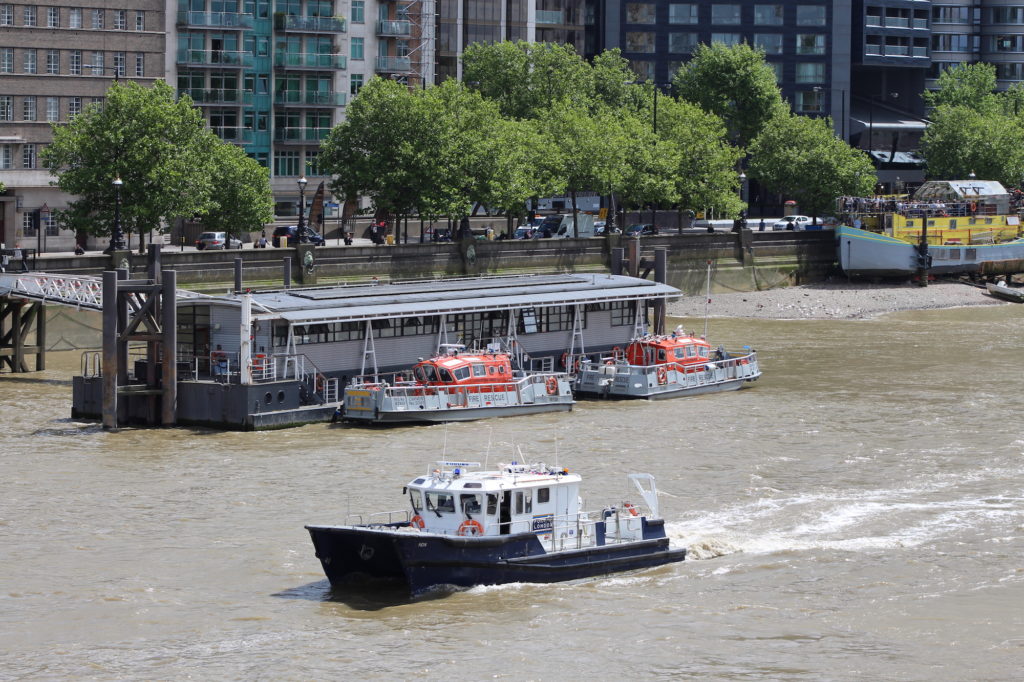
You might see one of them guiding a large cruise ship up the river, and particularly, if you’re in the area around Tower Bridge, you will see them leading and watching over ships that pass through to moor next to HMS BELFAST.
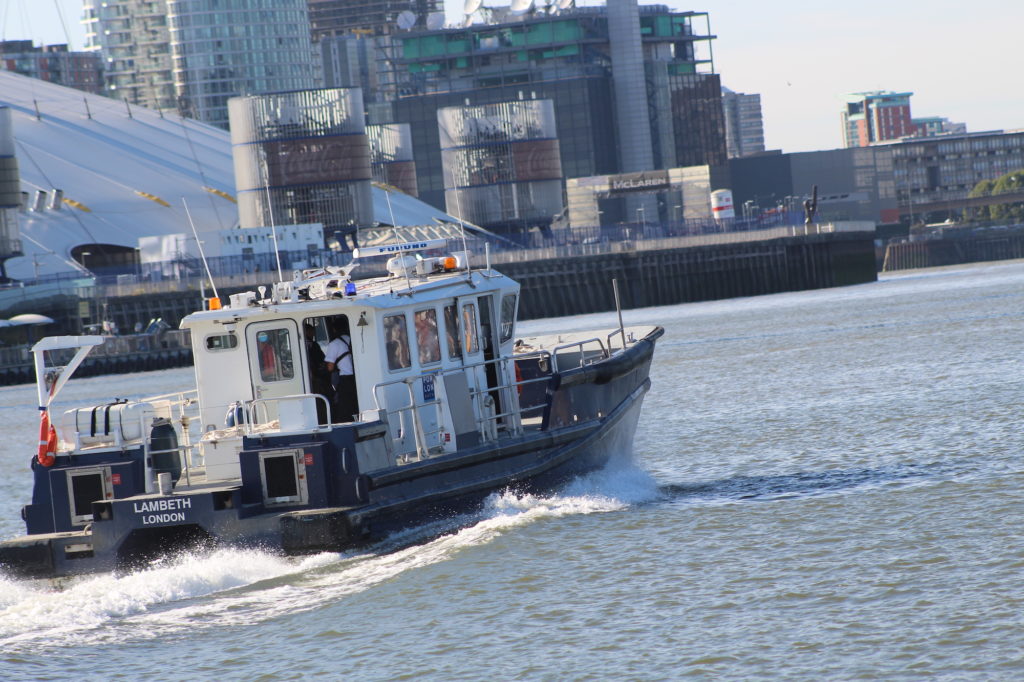
The Port of London Authority, PLA, gives warnings of bridge closures, or partial closures, and with help from their patrols, oversees the section of the river where work is taking place. For instance, earlier this year between March and May they needed to organise arch closures on Canon Street Rail Bridge and Southwark Bridge to allow work on the Illuminated River art commission. Byelaws dated 2012, dictated that the arches should be marked in a triangle with three red discs by day and lights in the same position by night. London Bridge, was unaffected as the scaffolding used for the work did not reduce the height or shape of the arches.
The Millennium Footbridge, also a part of the art project, was reduced in height by scaffolding but not to the extent that the headroom was below that of Southwark Bridge and Canon Street Rail Bridge. However, an ancient byelaw ruled that reduced headroom should be by day marked with “a bundle of straw large enough to be easily visible and displayed at the height of restricted headroom” and “at night by a white light in place of the bundle of straw.” Though modern rules have to be observed, there are circumstances such as that of the Millennium Bridge where the traditional could be, and was followed.
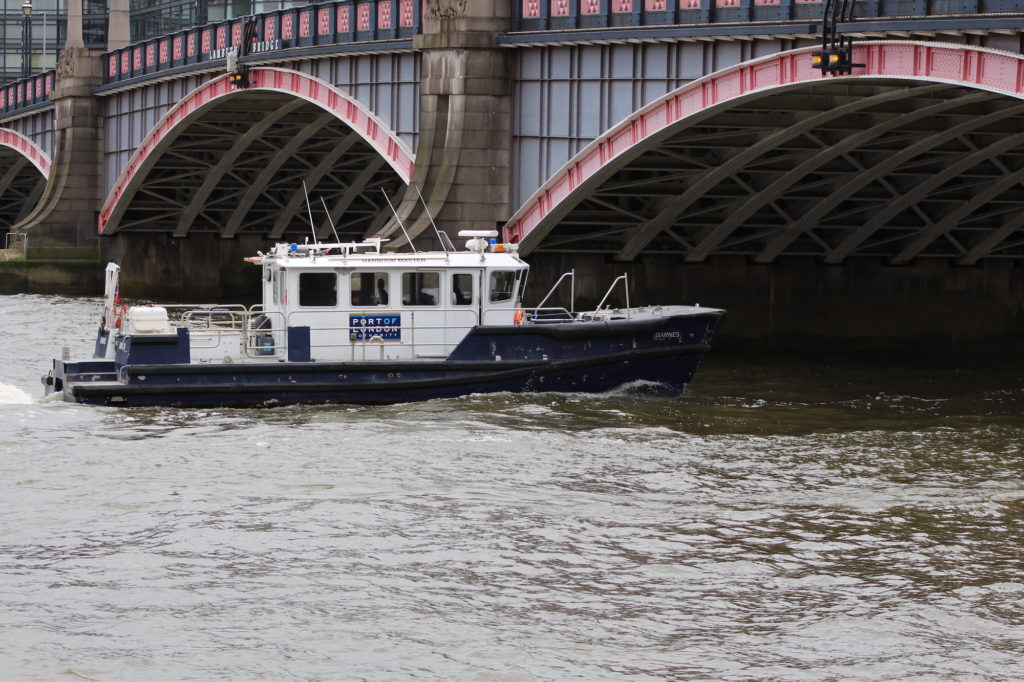
You will also see these vessels making sure that the river is supervised and kept closed for sporting events such as the annual Oxford and Cambridge Boat Race; The Thames Historic Barge Driving Race; the Great River Race; and the Race for Doggett’s Coat and Badge, the latter believed to be “the oldest continually competed sporting event in the world”. You can find out more on the PLA Events Calendar. They are also in attendance for the New Year Fireworks and for ceremonial occasions, such as the Queen’s Diamond Jubilee Pageant in 2012, when the river is closed to normal traffic.
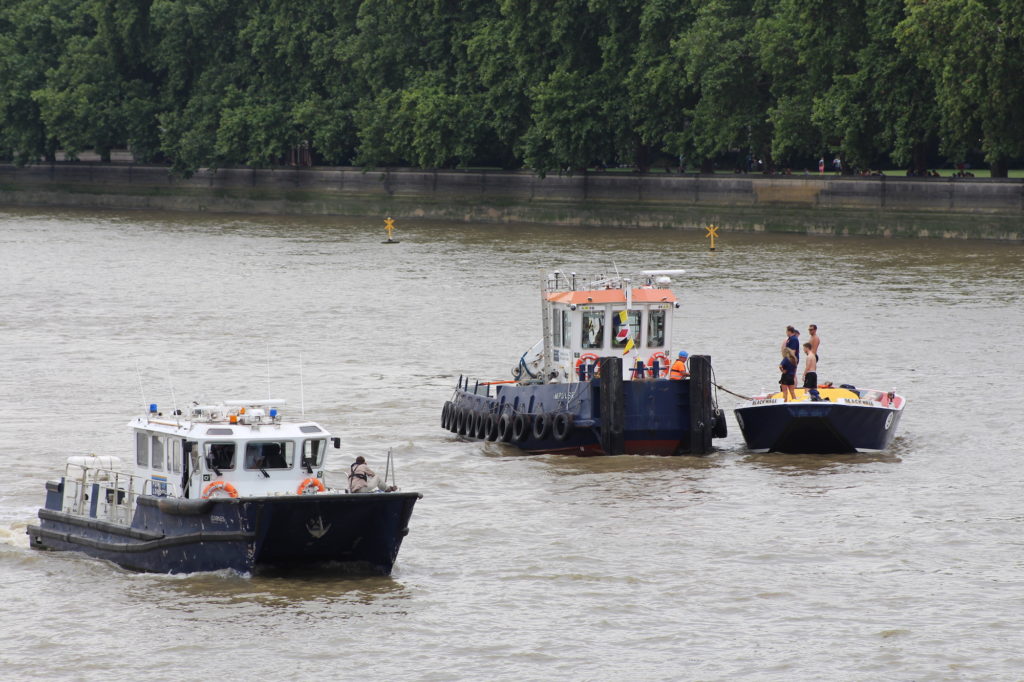
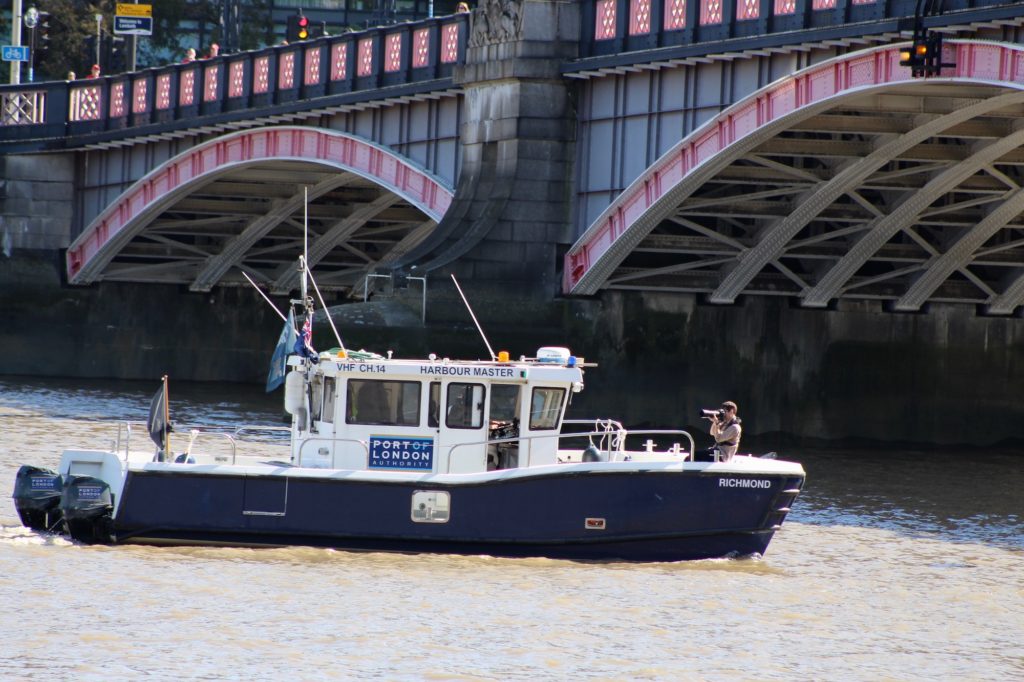
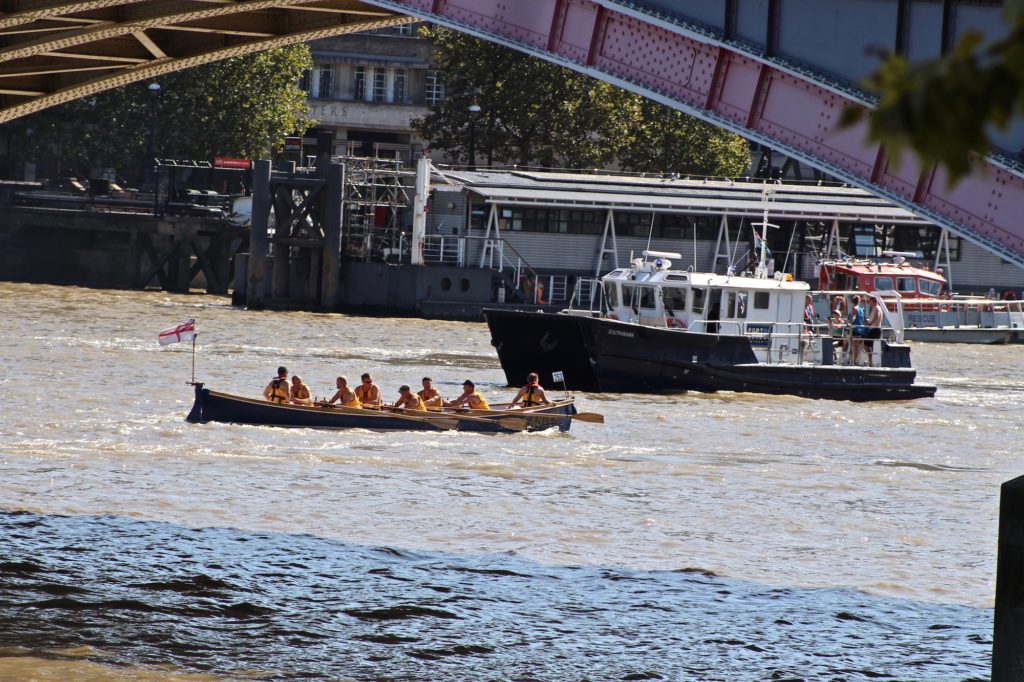
Walking along beside the Thames you are also likely to see survey boats checking the channels for obstructions both under and on the water surface, as well as “providing vital information on depths and tidal data”.
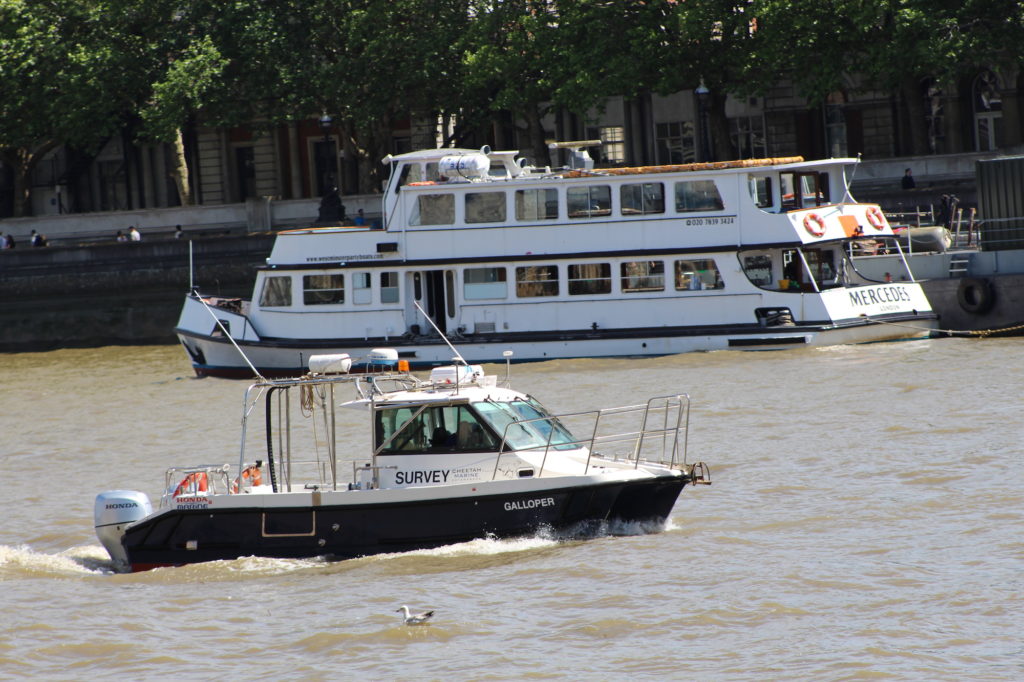
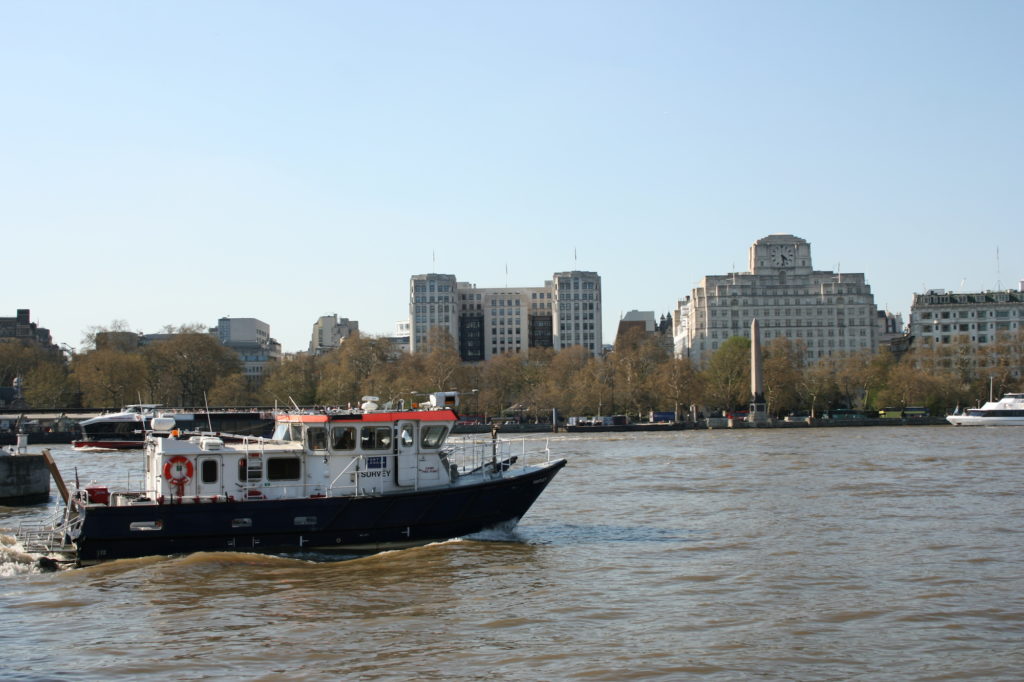
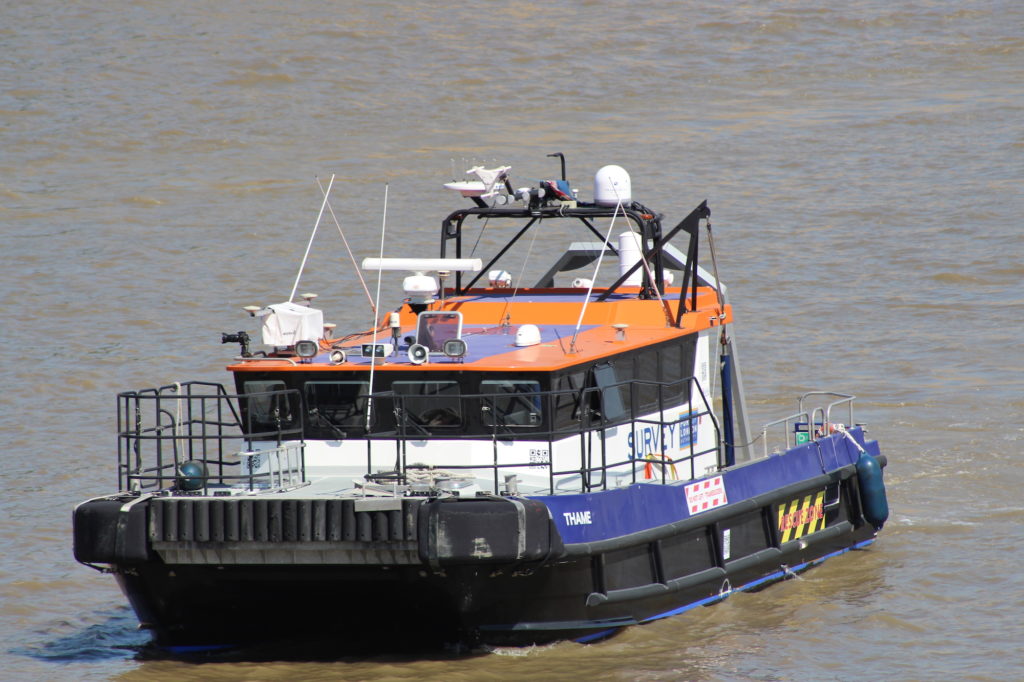
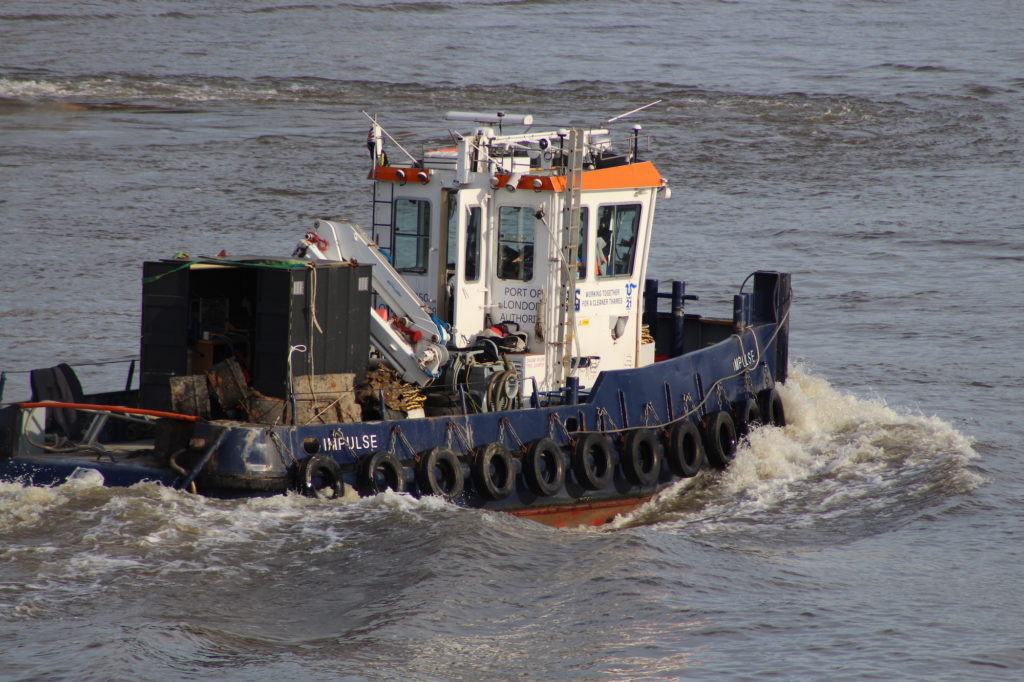
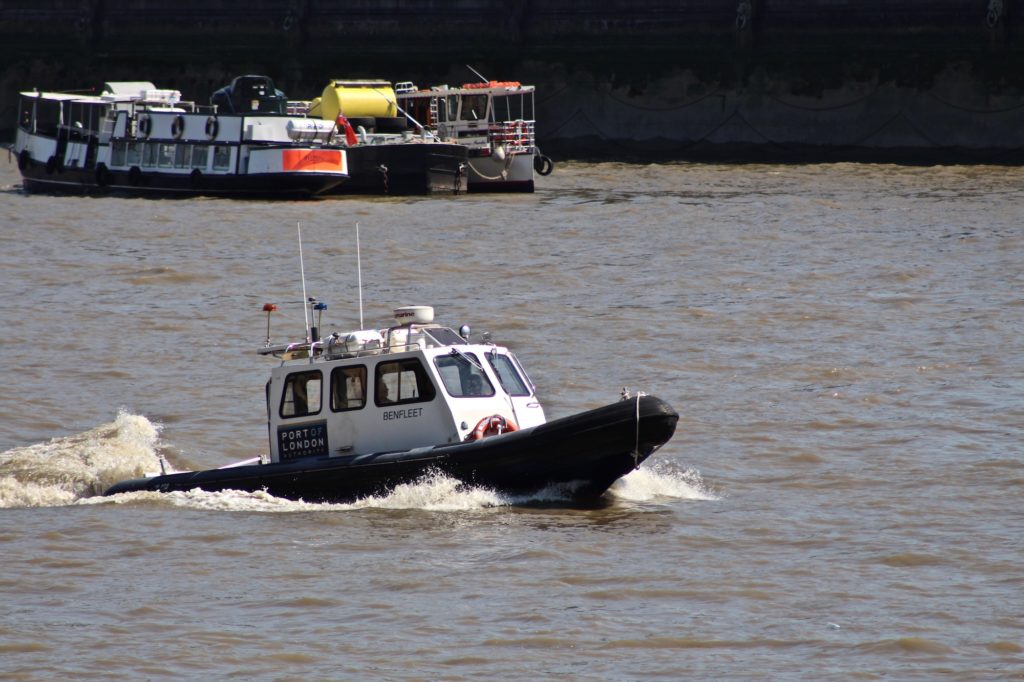
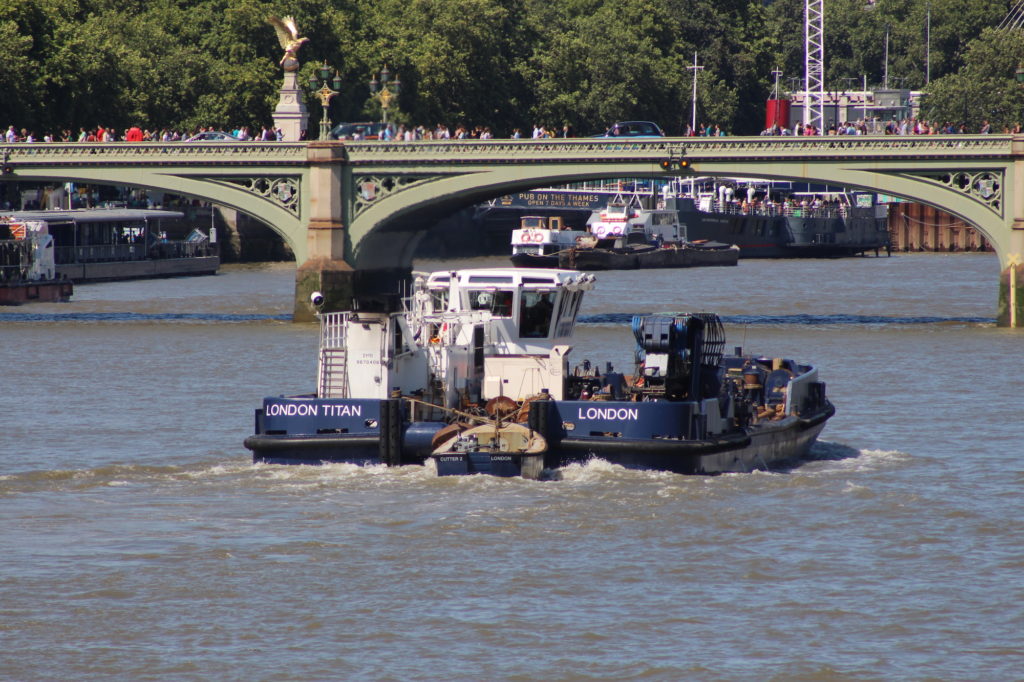
Vital for keeping the Thames clear of obstructions, LONDON TITAN was carefully designed to operate along most of the ninety-five miles of the tidal Thames, being sufficiently adaptable to pass under all the bridges as far as Richmond. She is used for “mooring maintenance; laying and recovering navigation buoys; hauling wreckage from the riverbed; supporting diving operations; and small scale plough dredging operations”. The work undertaken by her crews ensures that the river is marked and kept safe for all river users, whatever the size of their craft.
The Port of London Authority is also working with other organisations to help clean up the Thames with a Cleaner Thames campaign. They have a number of passive driftwood collectors and also driftwood craft to collect floating debris and to empty the driftwood collectors.
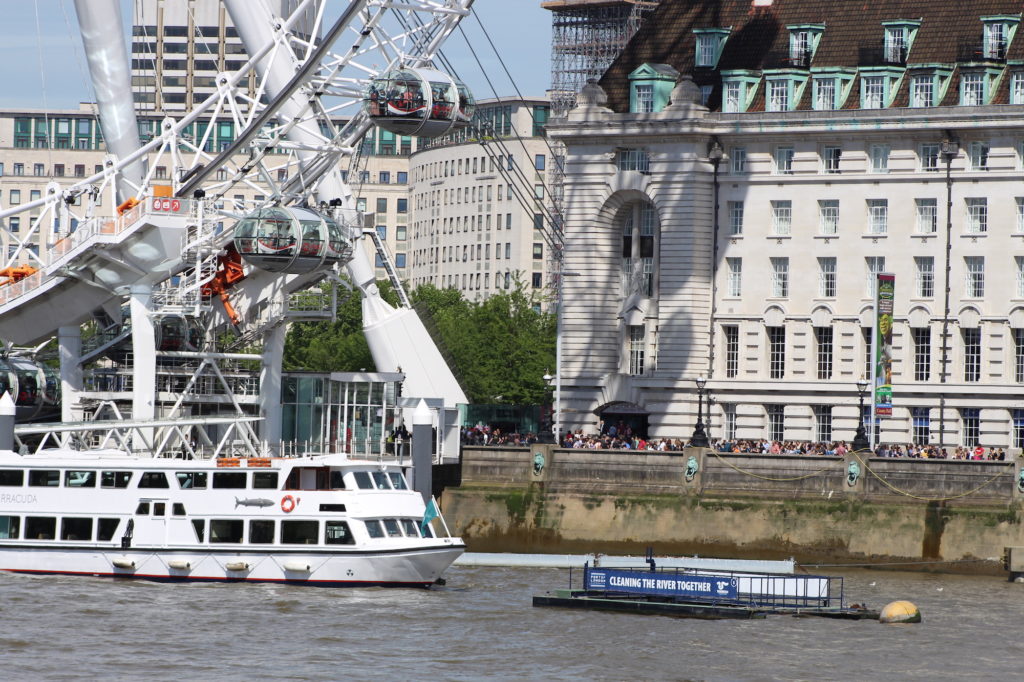
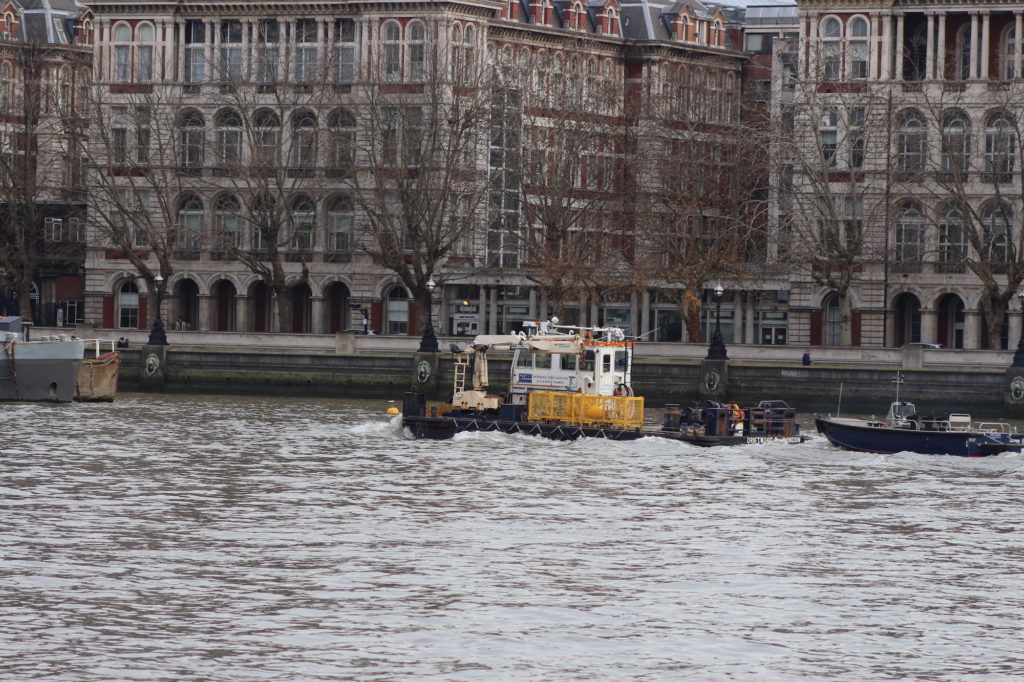
The Port of London Authority is a complex organisation with highly skilled Pilots guiding cruise ships, aircraft carriers, large yachts, traditional tall ships and other vessels, though the Thames Estuary to port. And experienced Captains who patrol the tidal Thames every day of the year and know the river with its dangers but as well as their usual checks they have to be on the alert for anything. Just recently they rescued a stranded dog and sadly, patrol vessel SOUTHWARK had to tow away for examination the body of a whale found close to Battersea Bridge. The Port of London fleet is there for everyone, overseeing professionals and amateur river users alike, and you can find out more about all aspects of their work by exploring their website.
Further information:
The Port of London Authority website, my main source, covers in great detail, all aspects of navigation and safety on the tidal Thames. Details from there are in quotation marks.
Follow them on Twitter: @LondonPortAuth
The History of the Port of London: Peter Stone, Pen & Sword, 2017 is an excellent read for those wishing to explore London’s role as a port in depth.
Follow Peter Stone on Twitter: @LondonStone